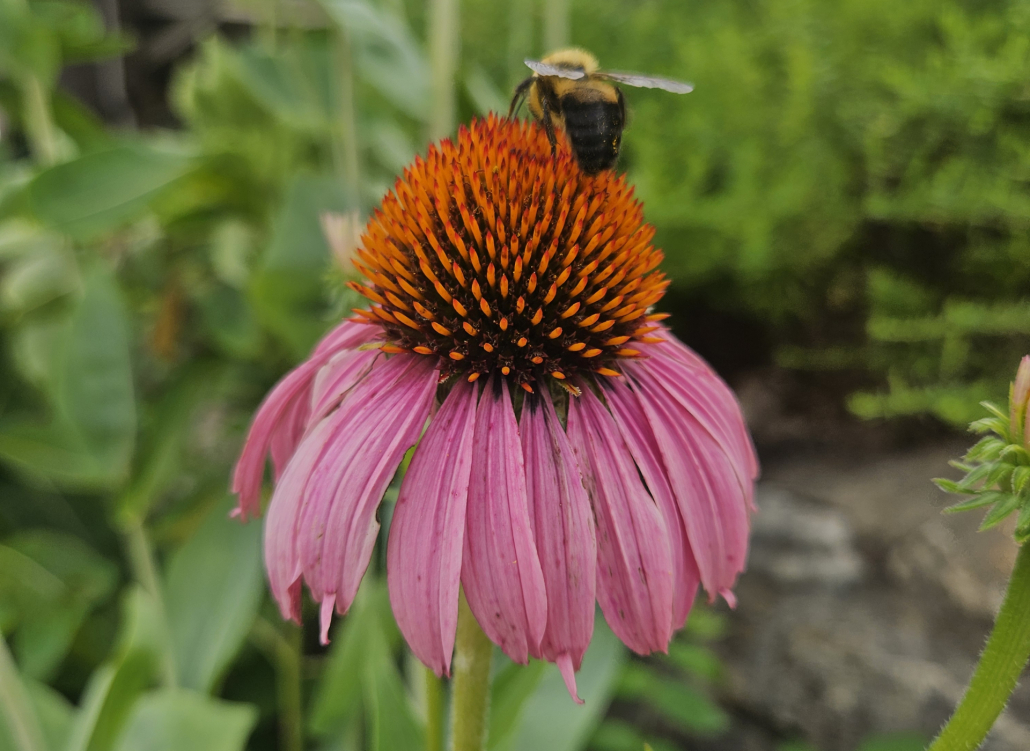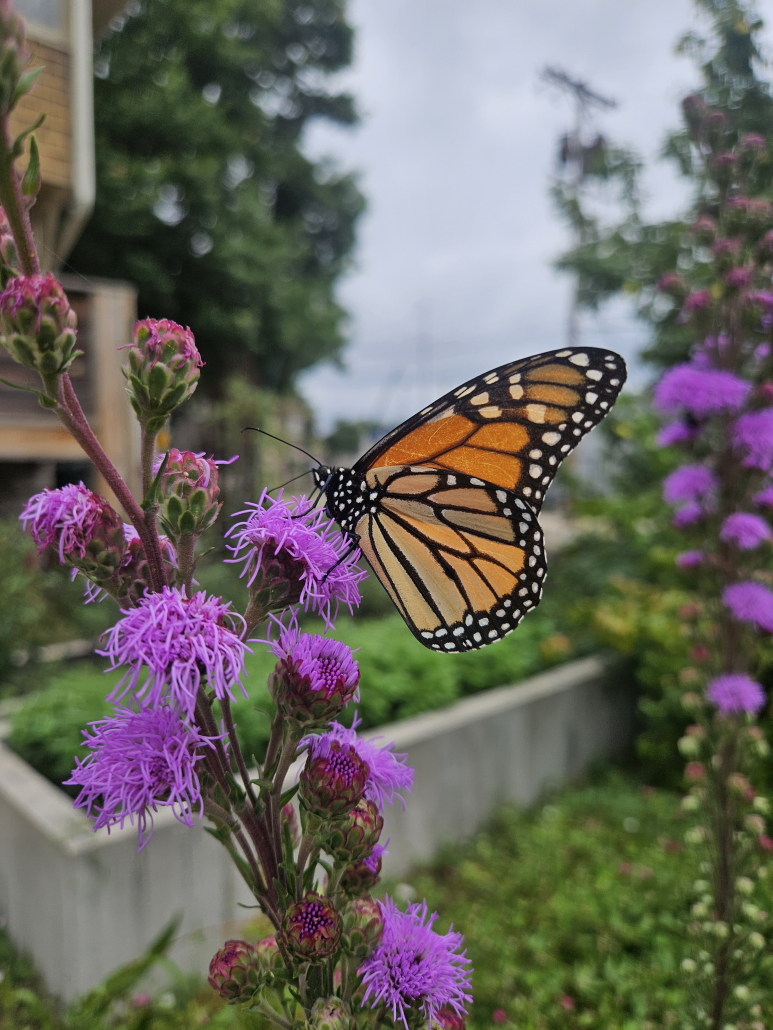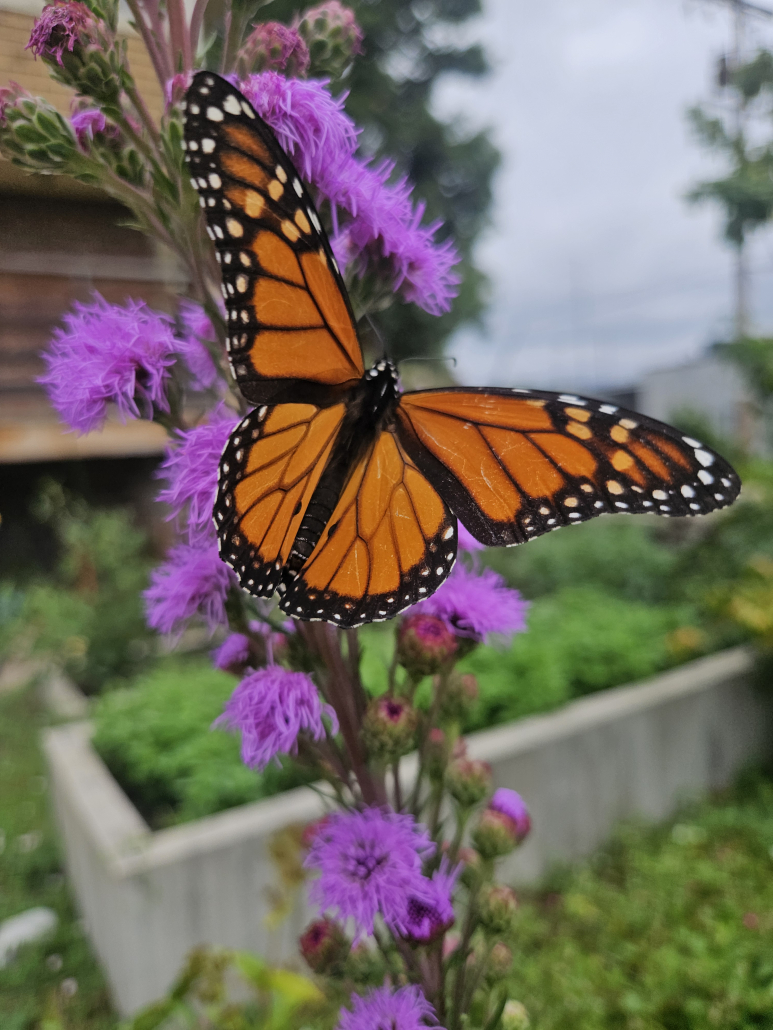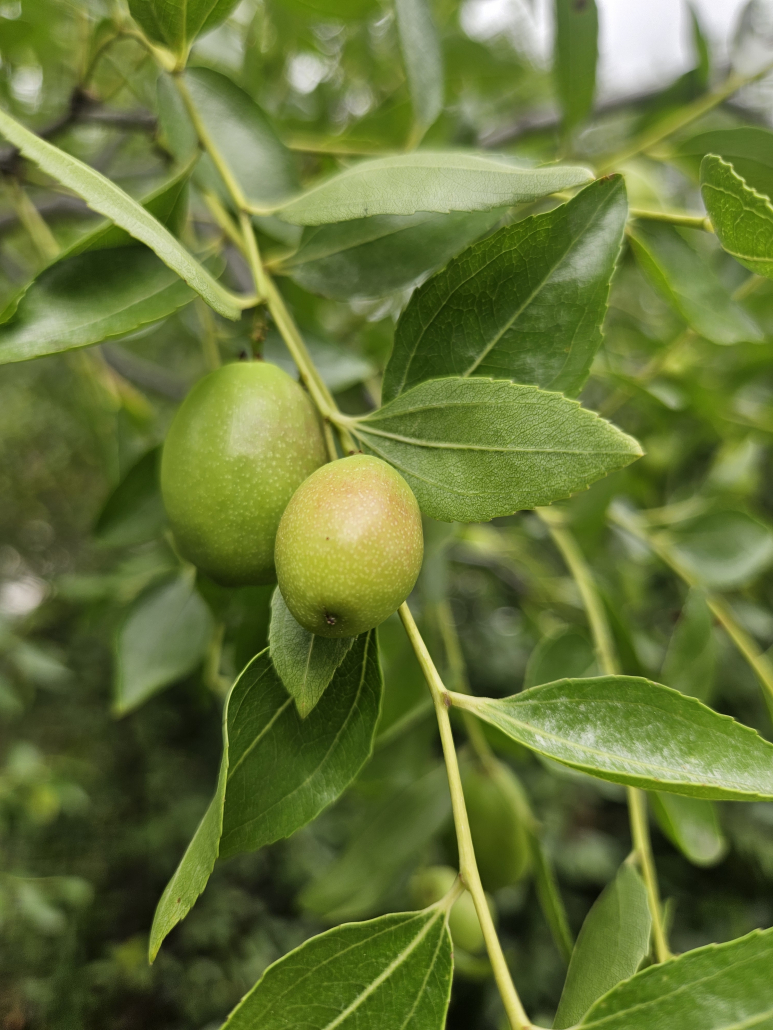Pear Trees, French Drains, and Wild Bees: Summer at Project Living Proof
By: Kasi Darnell

 Project Living Proof is humming. Majestic monarchs flap through the air, wings catching the light. Busy bees wobble from bloom to bloom in the pollinator garden, heavy with pollen and purpose. Native wildflowers are at their peak—coneflowers and milkweed standing tall and proud, like they know their place in the world.
Project Living Proof is humming. Majestic monarchs flap through the air, wings catching the light. Busy bees wobble from bloom to bloom in the pollinator garden, heavy with pollen and purpose. Native wildflowers are at their peak—coneflowers and milkweed standing tall and proud, like they know their place in the world.
And they do. These aren’t just pretty faces—they’re part of Project Living Proof’s rain gardens, a finely tuned stormwater management system hiding in plain sight. Every wild bloom and swaying stalk is part of a larger plan: to catch water, slow it down, and return it gently back to the earth—not as a torrent intonearby Brush Creek, but as a quiet trickle feeding the subsoil.
Which is a good thing, because it’s been raining like the sky forgot how to quit. All that water could be a disaster—but not here. Project Living Proof is built to take it.
Just off the front porch, where the downspout empties, is a little magic trick disguised as grass: a French drain. It looks like nothing special—just a patch of yard—but underneath it is a gravel-filled pit engineered to hold and slowly release water, protecting the house and soil from flooding and erosion. There might be more of these tucked around the property, but this one is obvious, soaking up the overflow like a thirsty sponge. 
Out back, the driveway tells its own story. It’s concrete, but unfinished—pockmarked and raw, on purpose. This is permeable pavement, and it’s part of the system too. Instead of sending rainwater careening into the gutter and on toward Brush Creek (already inundated with recent rainfall) the surface invites the water in. It sinks, percolates, disappears. Smart, subtle, sustainable.
The Anita B. Gorman Conservation Discovery Center stands just behind it, calm and green. And while most visitors don’t think twice about what’s happening in this little yard next door, it’s all deeply connected. Every native plant, drain and un-smoothed driveway ripple is part of the flood control story along the Brush Creek corridor.
Doing their part to keep this system running smoothly, a small but mighty group showed up for a Yard Clean-Up Day last month, hauling pruners and good intentions. The rains had sent everything into a growth frenzy—plants sprawling, creeping and overtaking. Together, we trimmed and tamed, giving the smart landscaping a chance to breathe again.
 And there, half-hidden in the green chaos, stands the pear tree, its branches heavy with almost-ripe fruit. This is no vanity crop. Like the rest of the garden’s produce, these pears are headed to a local food bank, part of the house’s quiet, relentless mission: to be useful.
And there, half-hidden in the green chaos, stands the pear tree, its branches heavy with almost-ripe fruit. This is no vanity crop. Like the rest of the garden’s produce, these pears are headed to a local food bank, part of the house’s quiet, relentless mission: to be useful.
This is the beauty of Project Living Proof. It looks like a home, but it’s actually a sustainability lab, a community classroom and a glimpse of the future. A place where climate resilience doesn’t mean sacrifice—it means design. Native flowers and French drains. Pollinators and permeable driveways. Beauty and brains.
So come take a walk. Listen for the bees. Dodge the dragonflies. Watch the water disappear where it once would’ve flooded. And if you see a pear on the ground, pick it up. It might be headed to someone’s dinner table.
This isn’t just landscaping. It’s living proof that we can build better—and thrive doing it.
A big thank you to our volunteers, staff and amazing board members, Stephanie Burton and Torh Hinneh, for their hard work and support in keeping Project Living Proof beautiful and able to serve its purpose. If you are interested in helping maintain Project Living Proof, please email us at plp@metroenergy.org.


